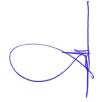
OIA23-0441
Connor Johnson
[FYI request #23636 email]
Dear Connor Johnson
Thank you for your email of 31 July 2023 requesting information relating to fishery officer
equipment. Your request has been considered under the Official Information Act 1982 (OIA).
We shall quote and respond to each part of your request below:
1. A list of all equipment Fishery officers Can/have/required to carry such as handcuffs, id
cards, radio, body can etc. I would like you to also include a photo for each object.
• ID card / warrant holder incl badge
• Stab Resistant Body Armour (SRBA)
• Radio in a pouch with a mic (Some staff use ear pieces for the radio)
• Rigid Handcuffs and key in a pouch
• Torch (varying types)
• Multitool (Like a Leatherman)
• Small first aid kit
• Notebook and pens
• Body Worn Camera
• Work mobile phones
• In reach communication devices (area specific)
• Satellite phones (Area specific)
• All Fishery Officers have a grab bag which they take on patrol which generally contains
(Legislation, inspection paperwork, larger torches, hiz viz vests, helmets if working at the
ports, wet weather gear, measuring equipment, drinking water).
Please note there can be regional variance in equipment due to geographic differences and
weather conditions, an example being that Auckland Fisheries Officers don’t carry snow chains in
their vehicles, but trucks in Auckland generally have waders for retrieving illegal nets. However,
the list above is the standard. Fisheries Officers can also carry additional items dependant on the
task.
Photos of each piece of equipment are withheld pursuant to section 6(c) of the OIA – where
release of the information would be likely
to prejudice the maintenance of the law, including the
prevention, investigation, and detection of offences, and the right to a fair trial.
2. I would like a list of all equipment in the vehicles including photos. These are objects
such as Signs, cones, scales, buckets etc.
Charles Fergusson Building, 34-38 Bowen Street
PO Box 2526
Wellington 6140, New Zealand
fisheries.govt.nz

• All trucks are fitted with radio and communications equipment radios are standard but some
areas may have hard wired satellite phones etc.
• Fish bins and / or buckets
• Water in containers for washing down
• Calibrated scales
• Larger measuring equipment (Measuring board for kingfish)
• Seabird mitigation inspection equipment (tape measures etc)
• Fire extinguishers
• First aid kits
• Recovery equipment (Shovel, tow rope etc)
• Sunscreen
• Exhibit kits of various types (Plastic bags, exhibit tags and property record sheets)
Please note dependant on the task, the load out can vary, for example if the fishery officers are
planning a checkpoint, they will carry cones and signage. Again, there is some regional variance
E.g.: Auckland staff don’t carry snow chains but in Auckland the trucks general y have waders for
retrieving illegal nets.
3. Any/all information about the emergency lighting/siren outfit including any diagrams
and/or maps. I would also like a detailed breakdown of all emergency lighting and siren
equipment.
All patrol vehicles are equipped with blue flashing lights and a siren system. Fishery Officers are
permitted under the land transport (Road User) Rule 2004 to stop vehicles for the purpose of
exercising their search powers provided by the Fisheries Act 1996. These vehicles are not used
for emergency response purposes.
The system is operated using a handheld controller in the vehicle and has the ability to change the
tone of the siren, speed of the flashing lights and for roof mounted light bars an alley light for
illuminating the side of the vehicle. The system includes grill and canopy mounted flashing lights.
Diagrams or maps of the system have been withheld pursuant to section 6(c) of the OIA -
to
prejudice the maintenance of the law, including the prevention, investigation, and detection of
offences, and the right to a fair trial.
Should you have any concerns with this response, I would encourage you to raise these with
the Ministry for Primary Industries a
t [email address]. Alternatively, you
are advised of your right to also raise any concerns with the Office of the Ombudsman.
Contact details are: Office of the Ombudsman, PO Box 10152, Wellington 6143 or at
[email address].
Yours sincerely
Steve Ham
Director Fisheries Compliance
2

